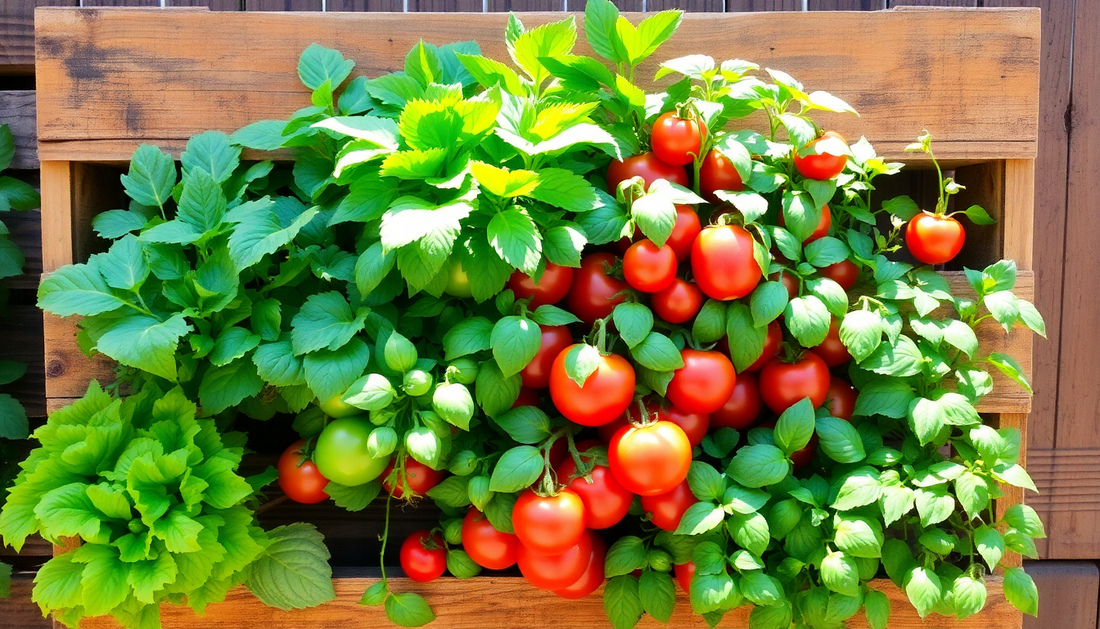
Grow Your Own Veggies: A Pallet Garden DIY
In today's fast-paced world, where convenience often trumps sustainability, it's easy to lose touch with the simple pleasures of growing your own food. But what if I told you there's a way to create a thriving vegetable garden, even in the most limited of spaces? Enter the pallet garden - a clever, cost-effective solution that allows you to cultivate a bountiful harvest right in your own backyard (or even on your balcony!).
As the founder of Idyl, an online shop dedicated to all things gardening, I've seen firsthand the transformative power of pallet gardening. Whether you're a seasoned green thumb or a complete novice, this DIY project is a game-changer that can help you reconnect with nature, reduce your carbon footprint, and enjoy the freshest, most flavorful produce imaginable.
The Beauty of Pallet Gardening
Pallet gardening is a brilliant way to maximize your growing space, especially if you have a small yard or limited outdoor area. By repurposing wooden pallets, you can create tiered, vertical gardens that pack a punch in terms of both aesthetics and productivity. These compact, customizable structures allow you to grow a wide variety of vegetables, herbs, and even some fruits, all while taking up minimal floor space.
But the benefits of pallet gardening go far beyond just space-saving. This sustainable approach to gardening also helps reduce waste, as you're giving new life to materials that would otherwise end up in a landfill. Plus, the raised nature of pallet gardens makes them easier to maintain, reducing the strain on your back and knees.
Getting Started with Your Pallet Garden
Ready to dive in and start your own pallet garden? Here's a step-by-step guide to help you get started:
Step 1: Gather Your Supplies
The beauty of pallet gardening is that the materials are readily available and often free or inexpensive. You'll need:
- 1-3 sturdy wooden pallets (depending on the size of your garden)
- Landscape fabric or weed barrier
- Potting soil or a high-quality garden mix
- Your choice of vegetable, herb, or fruit seedlings
Step 2: Prepare the Pallets
Start by thoroughly inspecting your pallets to ensure they're in good condition and free of any harmful chemicals or contaminants. If necessary, give them a good cleaning with a mild soap and water solution.
Next, decide on the orientation of your pallet garden. You can either stand the pallets upright, creating a vertical structure, or lay them flat, stacking them on top of each other. Either way, make sure to secure the pallets together using sturdy screws or nails to prevent them from shifting.
Step 3: Line the Pallets
To prevent soil from falling through the gaps in the pallet slats, line the interior with landscape fabric or a weed barrier. This will also help retain moisture and keep weeds at bay.
Step 4: Add Soil and Plant
Fill each section of the pallet with your potting soil or garden mix, taking care to leave a few inches of space at the top for your plants. Then, simply tuck in your seedlings, spacing them out evenly to allow for proper growth.
Step 5: Water and Maintain
Pallet gardens require regular watering, just like any other container garden. Be sure to check the soil moisture daily and water as needed, taking care not to overwater. Additionally, you may need to occasionally prune or trellis your plants to keep them healthy and productive.
Designing Your Pallet Garden
One of the best things about pallet gardening is the endless possibilities for customization. You can arrange your pallets in a variety of configurations to suit your available space and aesthetic preferences.
For example, you might opt for a simple, single-tiered pallet garden, or you could get creative with a multi-level structure that allows you to grow a wider range of crops. You can also experiment with different pallet orientations, such as stacking them horizontally or arranging them in a zig-zag pattern.
Another fun way to personalize your pallet garden is by incorporating decorative elements, such as painted or stained pallets, hanging baskets, or even trellises for vining plants. The sky's the limit when it comes to designing a pallet garden that truly reflects your style and gardening goals.
Maximizing Your Pallet Garden's Potential
To ensure your pallet garden thrives, it's important to choose the right plants and follow best practices for their care. Some of the most well-suited crops for pallet gardens include:
- Leafy greens (lettuce, kale, spinach)
- Herbs (basil, rosemary, thyme)
- Compact vegetable varieties (cherry tomatoes, bush beans, radishes)
- Strawberries
When selecting your plants, be mindful of their mature size and growth habits, as this will help you arrange them in the pallet sections for optimal space utilization.
Additionally, don't forget to fertilize your pallet garden regularly to replenish the nutrients in the soil. A balanced, slow-release organic fertilizer or compost tea can work wonders in keeping your plants healthy and productive.
The Joys of Pallet Gardening
As you embark on your pallet gardening journey, I encourage you to embrace the process and find joy in the small victories. Whether it's watching your first seedling sprout or harvesting a bountiful crop of fresh veggies, the satisfaction of growing your own food is truly unparalleled.
Beyond the tangible rewards, pallet gardening also offers a sense of connection to the natural world that can be incredibly grounding and fulfilling. As you tend to your little oasis, you'll find yourself slowing down, reconnecting with the rhythms of the seasons, and rediscovering the simple pleasures that come from getting your hands dirty.
So, what are you waiting for? Grab those pallets, get planting, and embark on a journey towards a more sustainable, self-sufficient, and delicious future. Happy gardening!







No comments